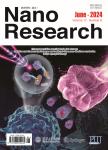Defect engineering of molybdenum disulfide through ion irradiation to boost hydrogen evolution reaction performance
作者机构:Soochow Institute for Energy and Materials Innovations & Key Laboratory of Advanced Carbon Materials and Wearable Energy Technologies oj Jiangsu ProvinceSoochow UniversitySuzhou 215006China State Key Laboratory of Nuclear Physics and TechnologySchool of PhysicsPeking UniversityBeijing 100871China
出 版 物:《Nano Research》 (纳米研究(英文版))
年 卷 期:2019年第12卷第7期
页 面:1613-1618页
核心收录:
基 金:the National Natural Science Foundation of China (Nos.21671141,11375018 and 11528508) the National Basic Research Program of China (No.2015CB358600) the Priority Academic Program Development (PAPD) of Jiangsu Higher Education Institutions for Optical Engineering in Soochow University the National Magnetic Confinement Fusion Energy Research Project (Nos.2015GB121004,2017YFE0302500 and 2018YFE0307100) from Ministry of Science and Technology of China,China-Romania Science and Technology Cooperation committee 43rd Regular Meeting Exchange program and Ion Beam Materials Laboratory (IBML) at Peking University
主 题:MoS2 nanosheet ion irradiation electrocatalyst hydrogen evolution reaction sulphur vacancy
摘 要:The inert basal plane of molybdenum disulfide (MoS2) restrains its further hydrogen evolution reaction (HER) *** work attempts ion irradiation to activate inert basal plane of MoS2 nanosheet to improve its electrocatalytic *** results demonstrate the sulphur vacancies generated by ion irradiation on the basal plane of MoS2 mainly boost the efficiency of HER *** moderate fluence of carbon ion irradiation gains the optimum HER performance with an onset potential of 77 mV and Tafel slope of 66 mV/dec.



